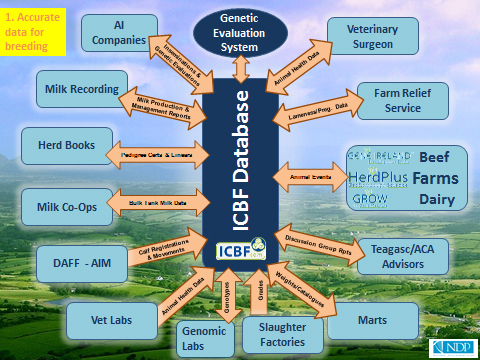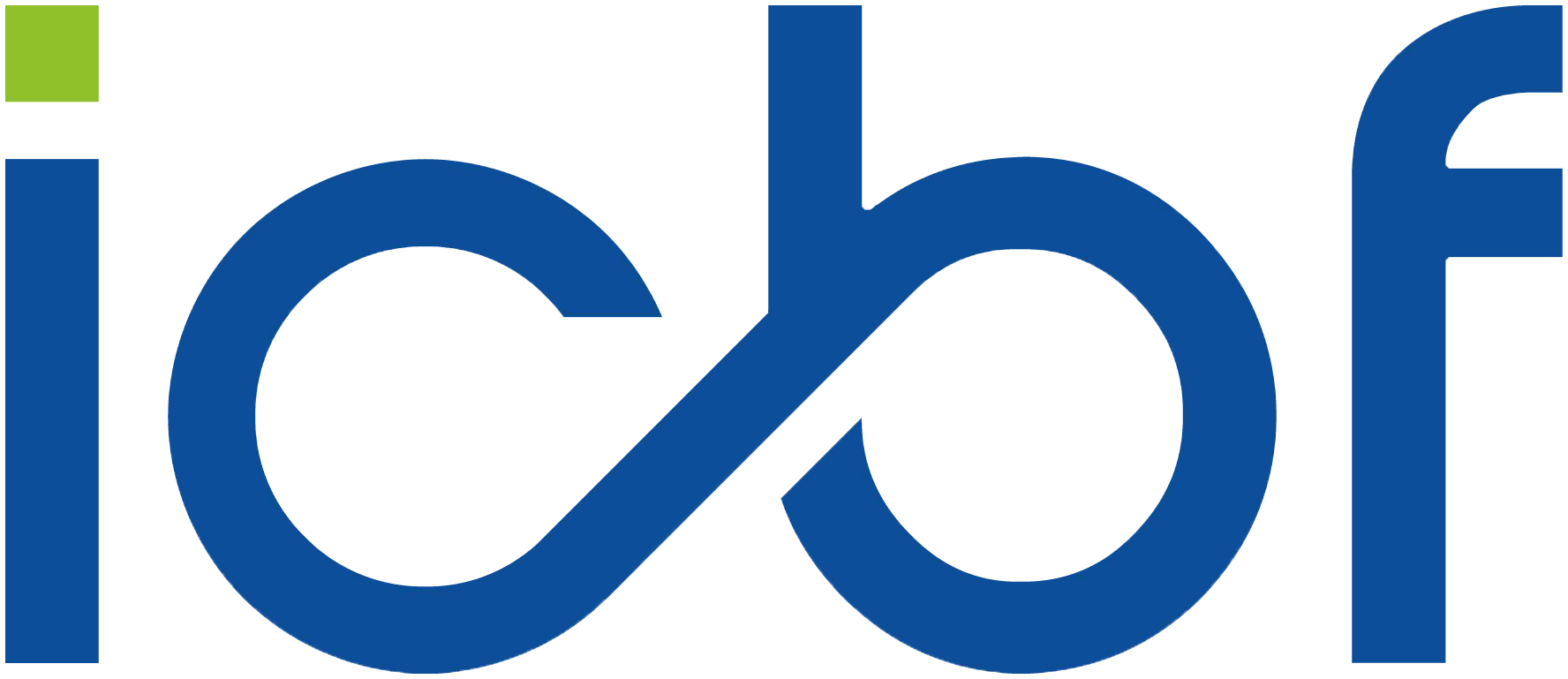The Irish Cattle Breeding Federation (ICBF) was formally set up in 1998, and is a non-profit organisation charged with providing cattle breeding information services to the Irish dairy and beef industries.
ICBF exists to benefit our farmers, our agri-food industry and our wider communities through genetic gain. We do this by the application of science and technology to ensure that our farmers and industry make the most profitable and sustainable decisions, through the use of the services provided from the ICBF cattle breeding database. Genetic improvement comes about when the parents of the next generation are genetically superior to their contemporaries. Bringing about improvement requires:
- Identification, ancestry and quantitative data on those traits of importance for large numbers of animals in each generation.
- A genetic evaluation system to identify the genetically superior animals in each generation. An essential part of the genetic evaluation system is a scientific knowledge of the objectives and principles of cattle breeding.
- A breeding scheme design that ensures the required data is available, and that farmers use genetically superior animals in each generation.
- Well informed farmers and industry partners who willingly provide accurate data from their own farms and make full use of the information services provided by ICBF, and its service providing partners, in their breeding and farm management decisions.
Ultimately, all the activity outlined above revolves around the maintenance and growth of the national cattle breeding database, which holds information on practically all animals registered nationally, and any available performance data relating to those animals and the herds in which they reside.

Hence, the team at ICBF has a heavy technical focus covering information technology skills, genetic evaluation skills and agricultural science skills. The flow of data to and from this national database can be represented by the diagram above. Ultimately, data is gathered from a variety of sources and information services are provided back to farmers and the industry which they use to ensure profitable and sustainable decisions are taken at farm level.
As part of the cross-industry agreement to set up ICBF, it was agreed that a Tag Contribution/Levy would be put in place. The idea was that there would be ‘3 legs to the ICBF funding stool’ to ensure ICBF was a viable operation on an on-going basis (Tag Contribution, DAFM grants, and Service Income).
The purpose of the levy is to ensure that the requisite funding is in place to provide the infrastructure to allow genetic evaluations (e.g. EBI, Euro-Star ratings) to be available to farmers through the various ‘user-pay’ services at minimal cost. It is also based on the fact that genetic improvement will positively impact all herds in the country, regardless of the level of engagement that they have with the fee paying services.
The Tag Contribution (€0.38) is paid on each National tag purchased (does not apply to replacement tags). The amount paid by farmers to ICBF in 2016 amounted to €645,000.
The tag contribution is used to fund:- Gene Ireland Breeding Programme Activities (both Dairy and Beef)
- Animal Events Data collection (e.g. Animal Events books, cost of keying data, etc.)
- Genetic Evaluations infrastructure (computers, geneticists)

ICBF has recently updated its logo and want to share the reasons for the change as well as the thought process behind the new logo design.
Research indicates that companies should change their logo/branding at minimum, every 5 years. The previous ICBF logo has not been updated in 12 years (2008). While the original logo served us well, we had outgrown it and felt it did not accurately reflect the evolution and progression of ICBF over the last 20 years.
A logo is an excellent opportunity to stand out from the crowd, to highlight the company brand and ultimately be recognisable to all. The more people who know and recognise a logo, the more established a brand becomes. Taking this into consideration, it was decided to continue using the blue and green from the original ICBF logo as these colours are fundamentally aligned with ICBF and are recognisable across the industry.
Our aim was to say a lot with very little. In general, simpler logos tend to be the most long-lasting and iconic. A simple, polished logo aims to create trust between individuals and the organisation. Viewing a visually appealing logo legitimises your organisation in people’s mind.
A strong presentation leads to a strong perception.
One of the major changes was to change from upper to lower case. Based on the research conducted for this project, it was found that logos in lower case exude an approachable and more casual vibe, allowing companies to connect easier with their target market. Consumers of today respond to personal touch and character. Companies who strive to come across as friendly, credible, and human-centric often opt for an all-lowercase text choice.
How the new logo represents icbf?
The importance of the letter i:
- The letter ‘i’ represents our 1 single, world leading, national database.
- The green dot in the ‘i’ signifies the island of Ireland as well as reinforcing our unique position both national and internationally.
The significance of the connection between the letters c and b:
- It resembles the infinity symbol which by definition means “without end”. This suggests that the work we do at icbf will never cease, we will continue to grow and develop over time.
- It symbolises a DNA strand which is at the core of everything that we do at ICBF.
- It displays the flow of data in and out of the national database.
The power of the letter f:
- We chose to keep the letter f separate from letters c and b to emphasise how icbf will continue to strive for progress and genetic gain, through forward and objective thinking.
